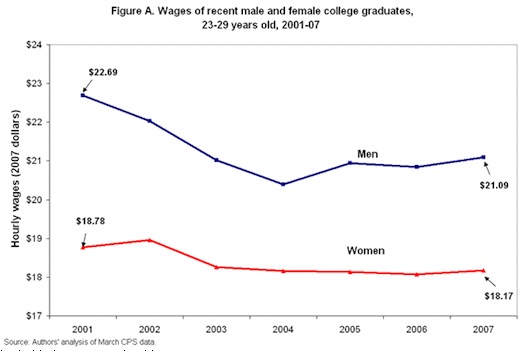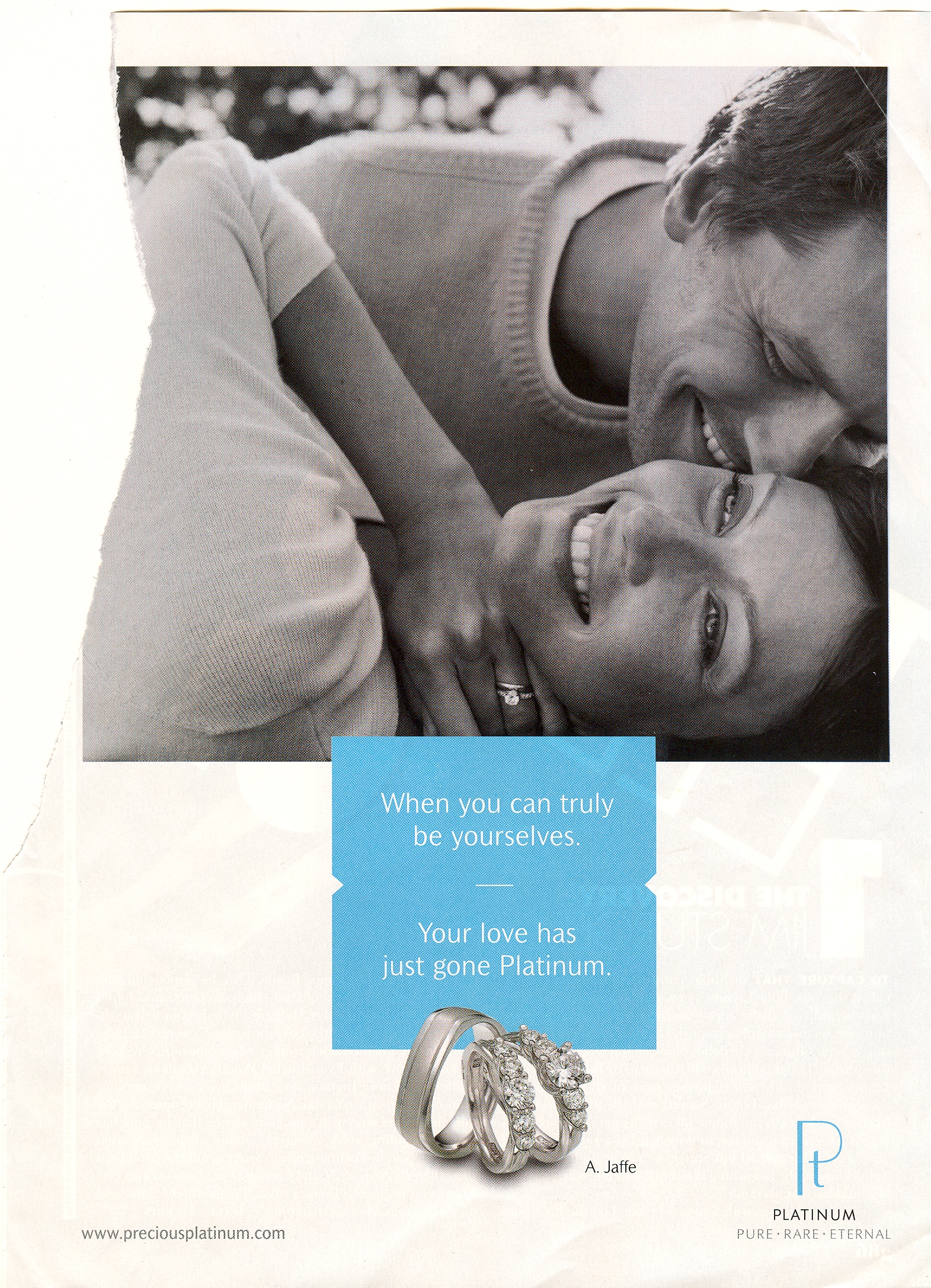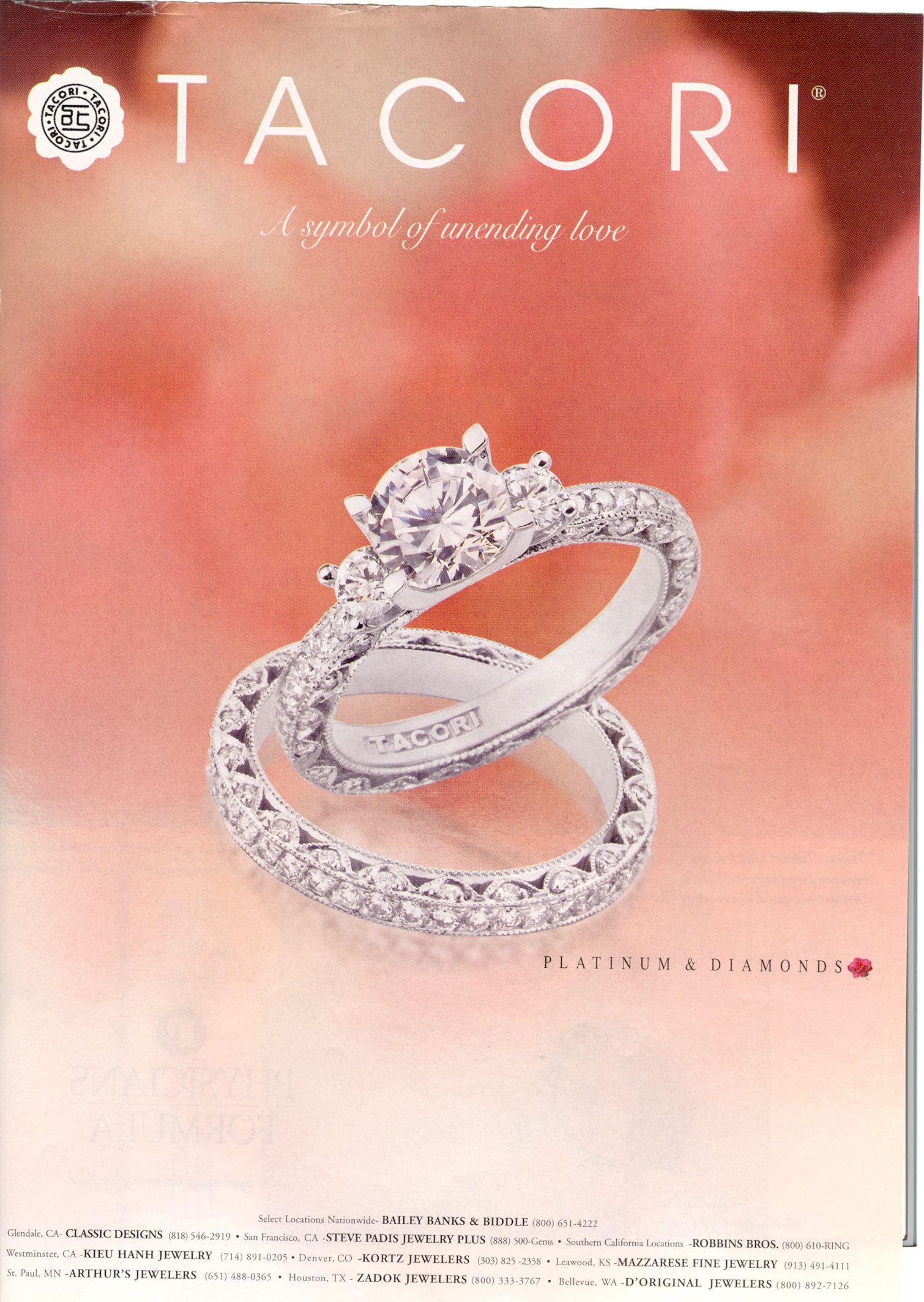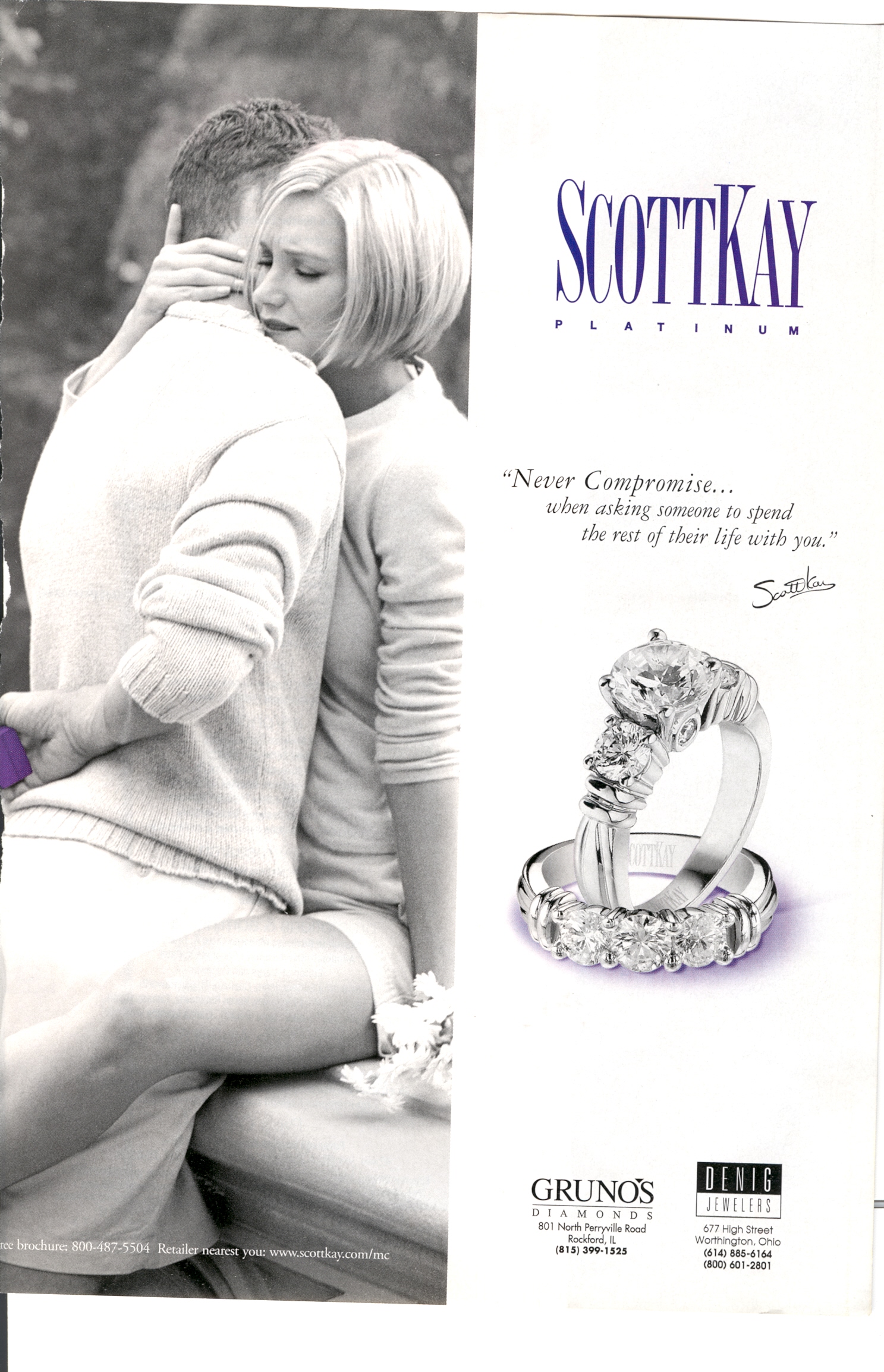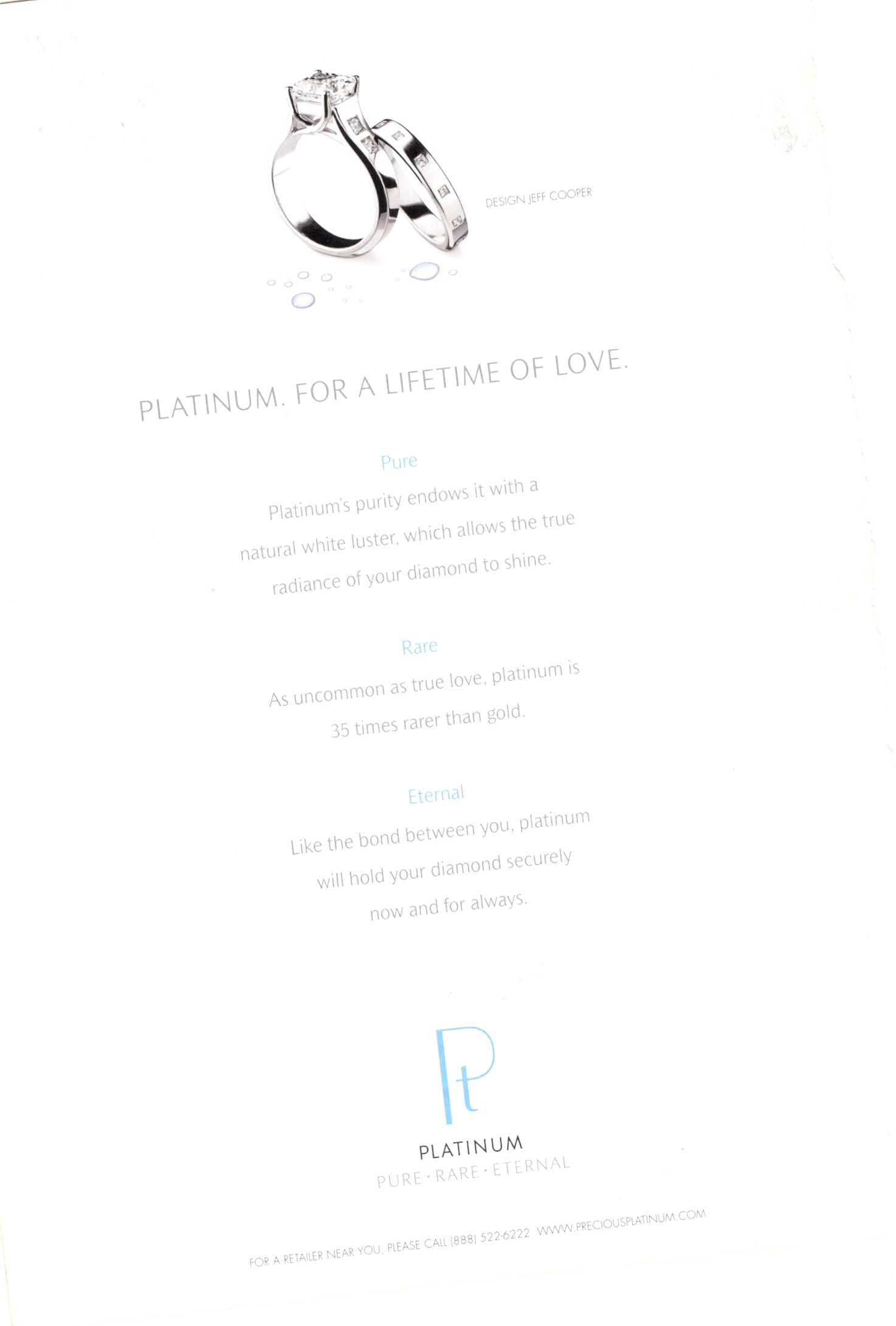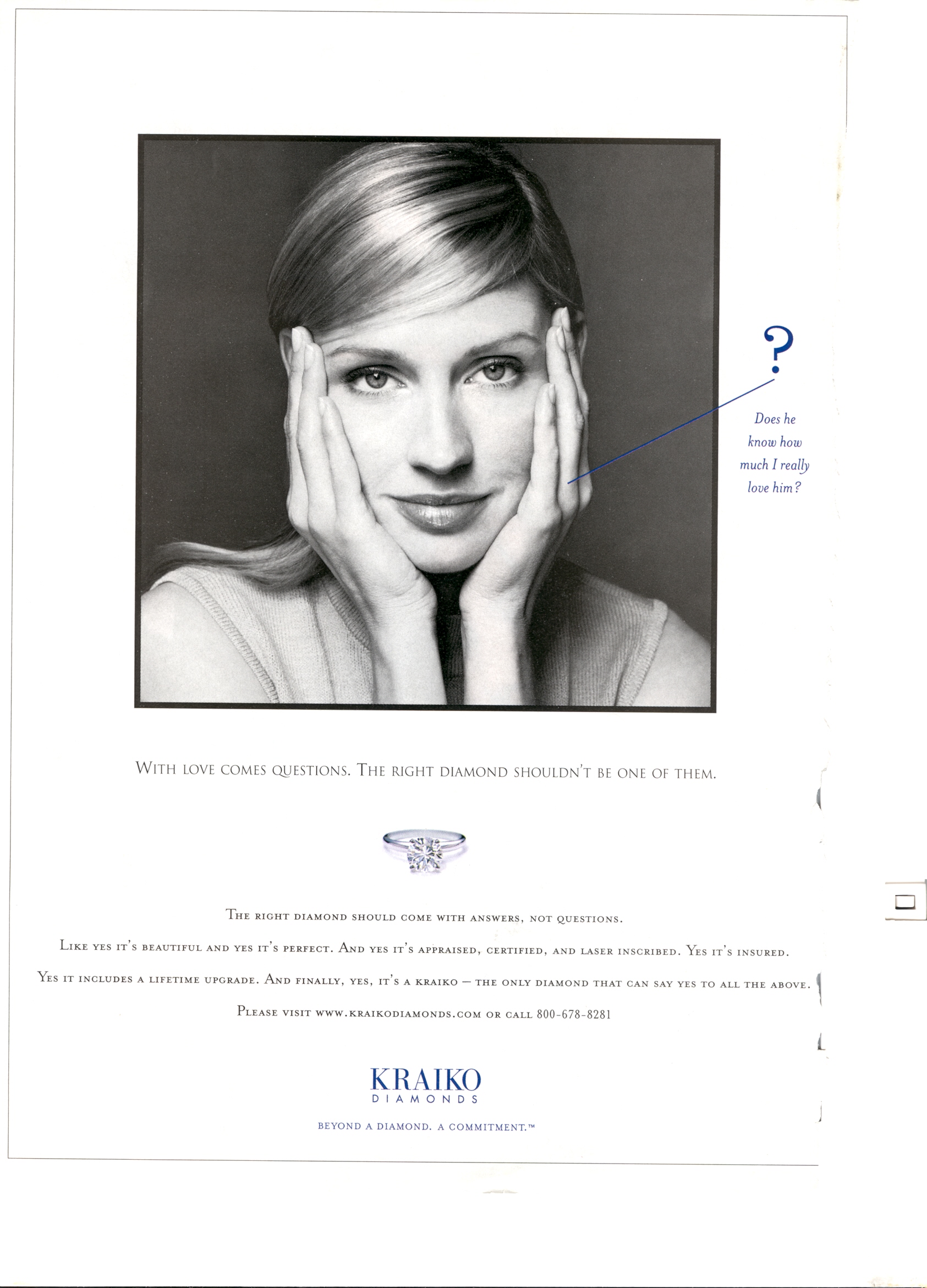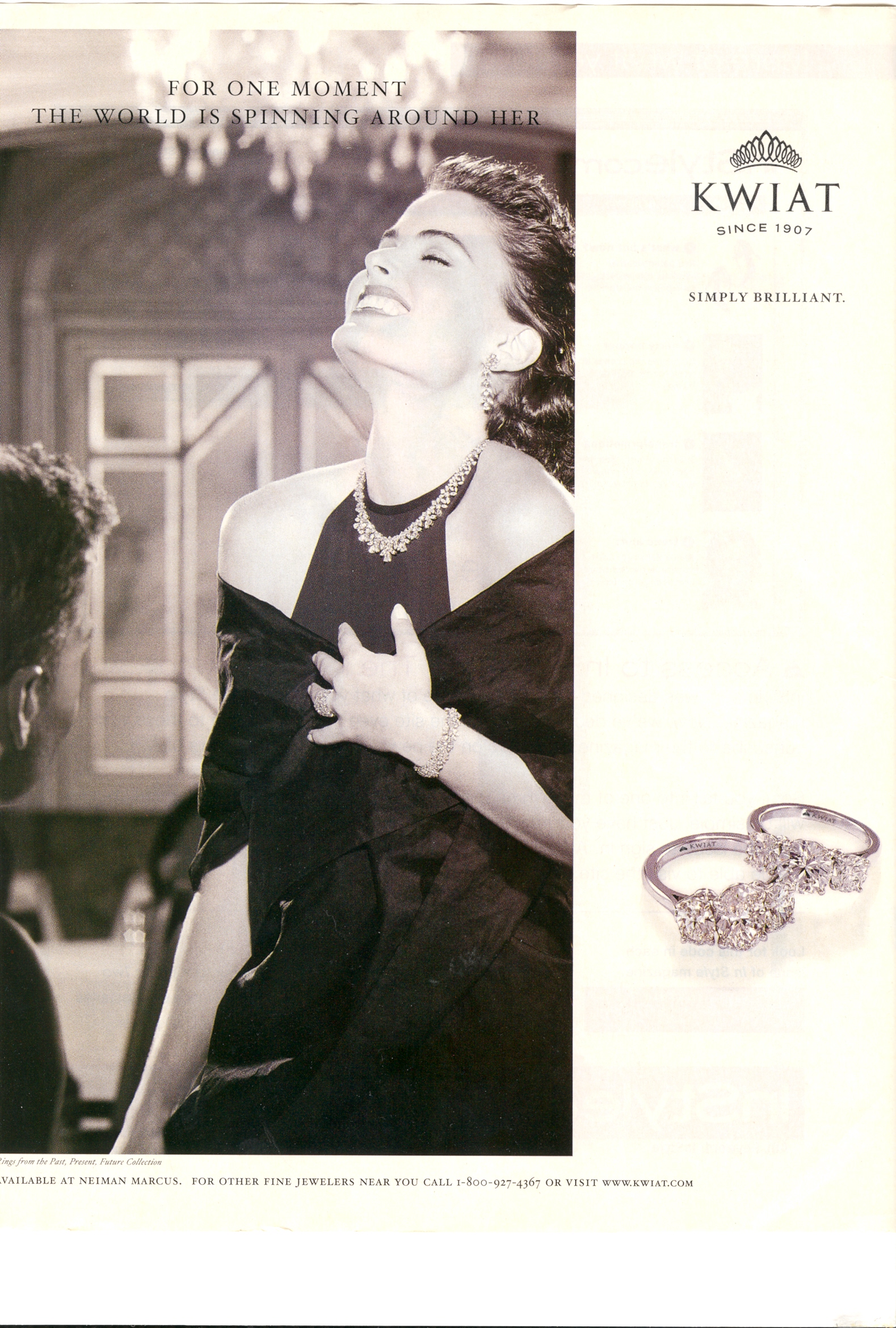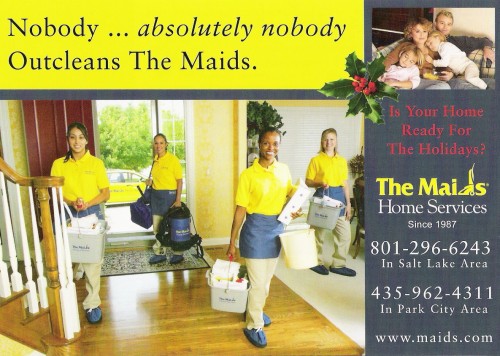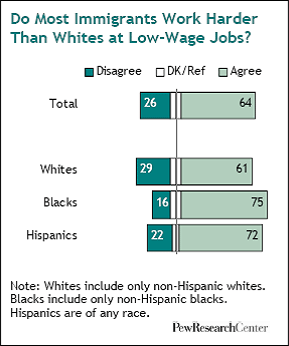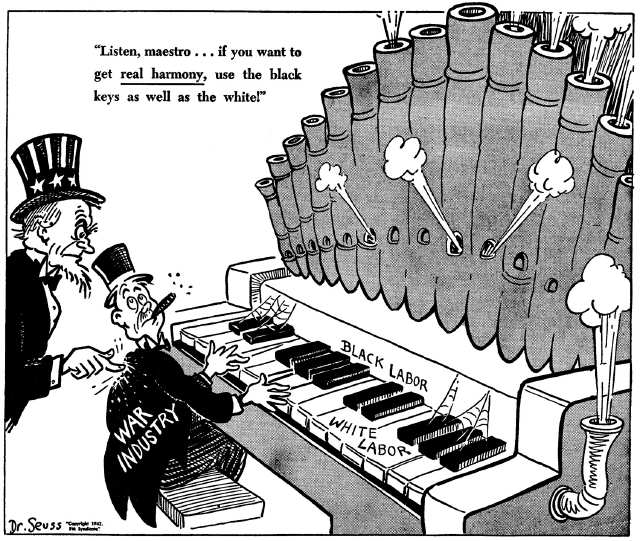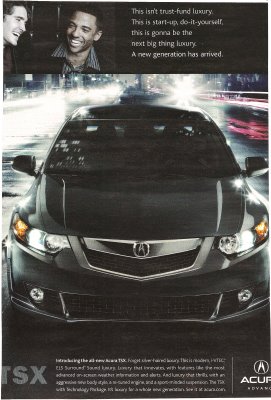Kay Steiger blogs about the decline in wages since 2001 for college graduates. Figure A shows that both men and women college graduates are earning less than they did in 2001. The wage gap between women and men has decreased, but only because men’s wages have been falling. To top it off, Figure B shows that a lower percentage of college graduates are getting health insurance and pension coverage.
Might this be related to the shrinking middle class?
Via Matthew Yglesias.

